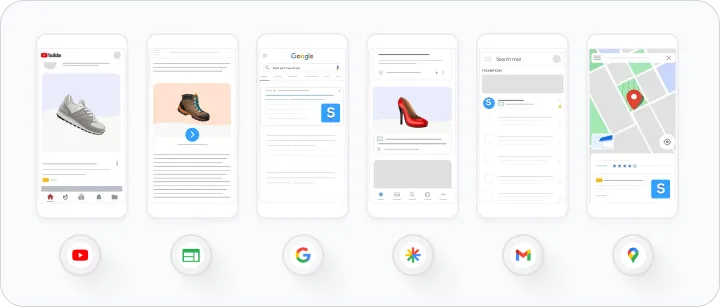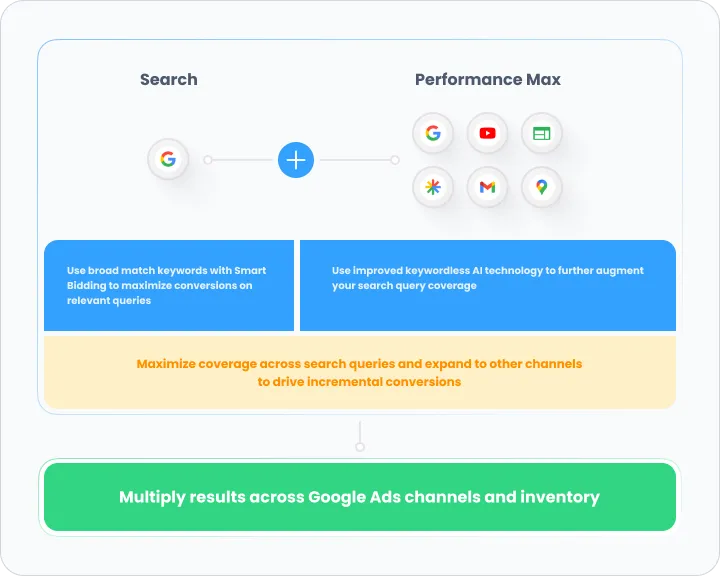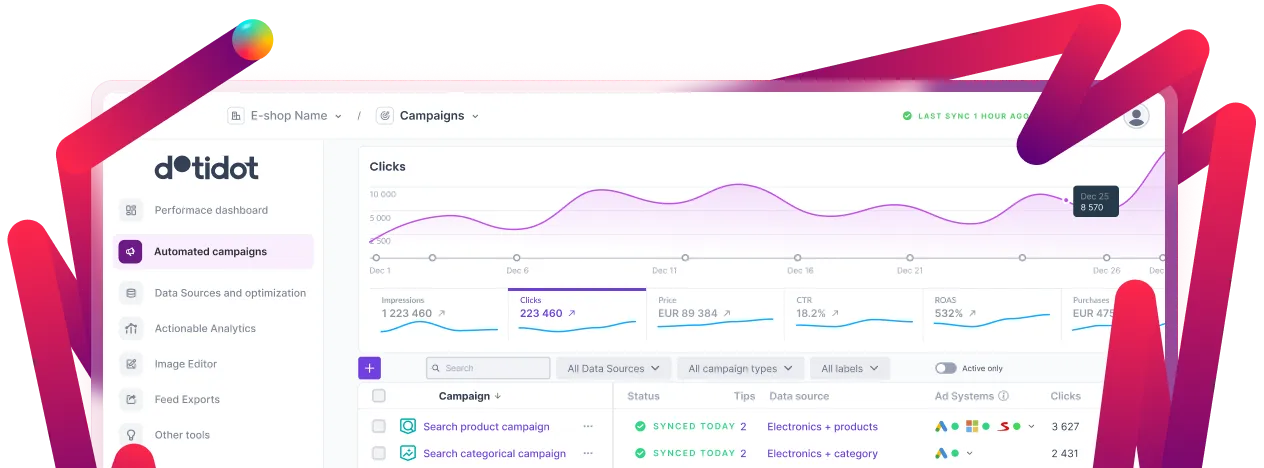Book a call with us






Performance Max is now a must-have campaign for most businesses. But is this really a jump forward? How does it work? And what are the advantages and disadvantages of Performance Max? In this article we answer all the questions.
Tip: If you're already a pro at using Performance Max and keep up with its latest tricks, you might want to check out our Performance Max checklist. It's all about helping you get the best results from your Pmax campaign.
It's not exactly an entirely new type of campaign. What Google did is merge Dynamic Search Ads along with Smart Shopping. You will provide a product feed, audiences, and a bunch of assets like headlines, videos, descriptions, and images for your Performance Max campaign. Google will mix it up and use proper combinations to deliver the desired results.

The biggest change is that Performance Max shows your ads across all available channels of the Google Ads platform: Search, Shopping, Display, YouTube, Discover, Gmail, and Maps. So, instead of creating one campaign for each channel, you create only a single Performance Max campaign. It will deliver your ads everywhere. Sounds great, right? Less work for initial setup and campaign management too. Yeah, but…
First, let's take a look at what Google said about the benefits of Performance Max before the release. According to Google, the main advantages are:
But the truth is sometimes very different, and while some points seem like a complete fail (richer insights, really?), others could work for various advertisers.
So this is what we really think about Performance Max benefits after using it for almost 2 years now:
Of course, there were no downsides announced, so we had to figure them out ourselves. But since we've been using it for some time now, we've already encountered some disadvantages.
But it looks like better times are coming. Google is aware of the feedback, and it seems like the first two points are nearly fixed. Read below to see how Google has achieved this.

Google announced new ways to steer how Performance Max works on Search and Shopping inventory. Great news for all marketers as this used to be the main downside of PMAX by many marketers. This is how Google achieves that your campaign won't cannibalize on other active campaigns.
Performance Max now respects your keyword targeting. Google has changed the rules and right now your Search Ads with keywords of any match type should be prioritized over Performance Max. If the query is not identical to an eligible Search keyword, the campaign or ad with the highest Ad Rank, which considers creative relevance and performance, will be selected.
So running a separate Brand Search campaign with your branded keywords should do the trick for Performance Max not taking credit for those easy conversions.
It does what it says. You will be able to exclude specific keywords on account level. By excluding certain search terms, advertisers can ensure that their ads only appear in the most relevant and brand-safe contexts. Account-level negative keywords apply to a range of campaign types, including Search, Performance Max, Shopping, Smart, and Local campaigns.
Find out more about Account-level negative keywords.
Take control of which brands your campaign associates with, even your own, using brand exclusions at the campaign level. These brand exclusions will work for Search and Shopping traffic in Performance Max. You can set up different exclusions for each of your Performance Max campaigns or share lists across multiple campaigns.
Not all PPC specialists experienced this but some did. And I am one of them. For two of my clients we have created a new Asset Groups just for Christmas campaigns. It was supposed to run for two months only and then paused. Results during the Christmas period were amazing and the performance skyrocketed.
The real problem came when the Asset Group was paused. Suddenly the campaign could not deliver the same results it did before christmas. It was far worse. Automation was suddenly very dumb and could not find converting people. So what helped? Creating a fresh new Performance Max with the same settings. It learned quickly and started delivering nice results. So remember this golden rule:
If you are running some big seasonal sale, edit the content of your current Asset Groups or create a separate Performance Max campaign just for this purpose.
We have prepared a detailed checklist of things you need to set up for launching your Performance campaign along with some tips on how to do it properly.
This what Google will need you to provide to help their AI find the right customers for your goals:
Discover the winning formula for launching a successful PMAX campaign with our Performance Max Checklist. This works even as a step-by-step guide to unlock the full potential of this type of campaign. Did you think that it's fully automated and you don't need to do anything? Well, you were wrong. Don't just aim high, reach new heights instead.

